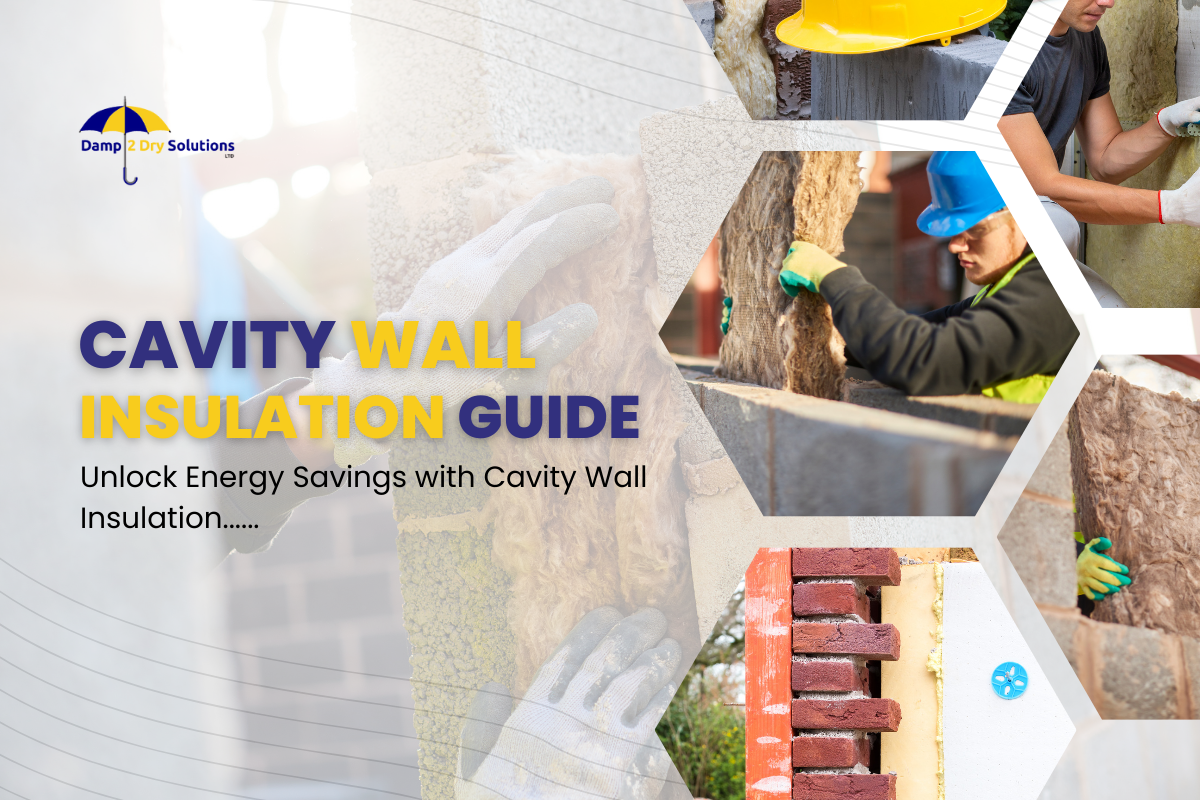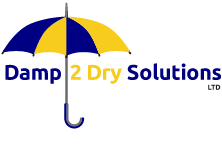
Looking for a way to make your home more energy-efficient? Cavity wall insulation (CWI) is a key solution that’s both simple and effective. It boosts your home’s ability to keep heat in, which is great for both the planet and your wallet.
Adding CWI is about more than just saving energy; it’s a step towards living more sustainably and cutting costs at the same time. By choosing to insulate your cavity walls, you’re not just making your home cosier; you’re also playing a part in reducing overall energy use and shrinking your carbon footprint.
What is Cavity Wall Insulation?
Cavity wall insulation involves filling the gap between the inner and outer layers of your home’s walls with insulating material. This helps keep your home warmer in winter and cooler in summer, reducing your energy bills. It’s a cost-effective way to improve your home’s energy efficiency.
Benefits of Cavity Wall Insulation
Boost Your Home’s Energy Efficiency
Cavity wall insulation (CWI) is a game-changer for your home’s energy use. By filling the gaps between your outside and inside walls, it works like a warm blanket, cutting down on heat escaping from your home.
This means your house stays cosy with less energy, slashing your energy consumption and bills.
Slash Your Energy Bills
One of the biggest benefits of cavity wall insulation is the way it can reduce your energy bills. With better heat retention, your home doesn’t need as much heating to stay warm.
This leads to significant savings on your energy costs, making CWI a smart investment that pays off month after month.
Live in Comfort and Warmth
Beyond just saving money, the benefits cavity wall insulation installation brings to your home’s comfort can’t be overstated. It keeps your house’s temperature more stable, getting rid of chilly drafts and cold spots.
Especially in the colder months, the added warmth makes your home a more comfortable place to be, proving that the benefits of cavity wall insulation extend well beyond just financial savings.
Environmental Impact
Cavity wall insulation also plays a significant role in reducing the environmental impact of our homes. By lowering energy consumption, CWI directly contributes to a decrease in carbon emissions, aligning with global efforts to combat climate change.
This reduction not only benefits the individual homeowner but also contributes to the broader societal goal of achieving a more sustainable future.
Types of Walls Suitable for Wall Insulation
Identifying Suitable Walls
Not all walls are created equal when it comes to insulation potential. The suitability of a wall for cavity wall insulation primarily depends on its construction.
Homes built with cavity walls, featuring a gap between two layers of brick or block, are prime candidates for CWI. In contrast, solid walls, lacking this gap, require alternative insulation methods.
Focus on Cavity Walls
Cavity walls, prevalent in constructions from the 1920s onwards in the UK, offer an ideal structure for insulation. The cavity between the walls acts as a perfect receptacle for insulation material, providing a straightforward solution to enhancing a home’s thermal efficiency.
Recognising whether your home has cavity walls is a crucial first step in exploring the potential for CWI.
Installation Process Step-by-Step Guide
The installation of cavity wall insulation is a process best entrusted to professionals, requiring specific tools and expertise to ensure effectiveness and safety. The procedure typically involves:
Assessment: A thorough evaluation to determine suitability for CWI.
Drilling: Strategic holes are drilled into the outer wall to access the cavity.
Filling: Insulation material, such as mineral wool or foam, is injected into the cavity through the holes.
Sealing: The holes are sealed, leaving the exterior virtually unchanged.
Importance of Professional Installation
Given the technicalities involved, professional installation is paramount to the success of CWI. Experts ensure the insulation is evenly distributed, avoiding any gaps or bridges that could compromise the insulation’s effectiveness. Furthermore, professionals can identify and mitigate potential risks, such as dampness, ensuring a safe and effective installation.
Safety Precautions
Safety is a critical consideration during the installation of cavity wall insulation. Professionals adhere to stringent safety protocols to prevent accidents and ensure the insulation does not adversely affect the structural integrity or ventilation of the home.
How much does cavity wall insulation cost?
So how much is cavity wall insulation? The cost of installing cavity wall insulation varies depending on the size of the home and the specific material used.
Generally, the cavity wall insulation cost ranges from a few hundred to a few thousand pounds, with larger homes requiring a higher outlay due to the greater volume of material needed. Below is a table that provides an estimated range of costs for cavity wall insulation across various UK locations.
|
Location |
Estimated Cost Range |
|
London |
£500 – £1,500 |
|
Birmingham |
£450 – £1,400 |
|
Manchester |
£450 – £1,350 |
|
Glasgow |
£400 – £1,300 |
|
Bristol |
£450 – £1,400 |
|
Newcastle |
£400 – £1,300 |
|
Leeds |
£450 – £1,350 |
|
Liverpool |
£450 – £1,350 |
|
Southampton |
£450 – £1,400 |
|
Cardiff |
£400 – £1,350 |
Please note that these figures are indicative and can vary based on factors such as the size of your property, the specific type of insulation material used, and the rates of local installers. For the most accurate and current pricing, it’s always best to obtain quotes from professional cavity wall insulation.
Potential Savings
Despite the initial cost, the potential savings on energy bills can be substantial. Homeowners can expect to see a reduction in their energy bills, with the savings often offsetting the cost of installation within a few years. The exact payback period depends on various factors, including the home’s size, the efficiency of the heating system, and energy prices.
Payback Period and how long does it last?
The payback period for cavity wall insulation is a critical metric for homeowners, representing the time it takes for the savings on energy bills to cover the cost of installation.
On average, homeowners can expect the payback period to range from 3 to 5 years, making CWI a financially viable energy efficiency measure for many.
“How long does cavity wall insulation last?” you might wonder. Well, once installed, cavity wall insulation can last the lifetime of your house, often over 40 years. It’s a long-term solution that doesn’t usually need replacing if done correctly, ensuring your home stays warm and energy-efficient for decades.
Potential Problems and Solutions Related to Cavity Wall Insulation
Common cavity wall insulation problems
Cavity wall insulation brings many advantages, but it’s not without its issues. If it’s not installed correctly or if the house doesn’t have good ventilation, problems like condensation, dampness, and mould can occur.
If you have question like “does cavity wall insulation cause damp” The answer is it depends. Cavity wall insulation itself doesn’t cause damp if properly installed.
Damp problems can arise if the insulation is incorrectly installed or if the house already has issues with moisture. It’s crucial to have a professional assess and install it to prevent any damp-related issues.
Addressing Faulty Installations
Faulty installations can lead to the aforementioned issues, underscoring the importance of hiring reputable professionals for the installation. Should problems arise, homeowners should contact the installation company for remediation.
Additionally, warranties and guarantees often cover such issues, providing further recourse for homeowners.
For those facing issues with cavity wall insulation, numerous organizations offer support and advice. From governmental bodies to consumer protection agencies, these entities can provide guidance on addressing problems and securing remediation.
Also Read:- Types of Mould Colours – Mould Colour Guide
Conclusion
Cavity wall insulation stands out as a compelling solution for enhancing the energy efficiency of homes. By carefully considering the suitability of your walls, engaging with professional installers, and understanding the financial and environmental implications, homeowners can make informed decisions about integrating CWI into their homes.
The benefits, from reduced energy bills to enhanced comfort and a lower carbon footprint, position CWI as a cornerstone of sustainable living practices.
For top-notch damp proofing and cavity wall insulation services, look no further than Damp 2 Dry Solutions Ltd. We got expert team ensures your home stays warm, dry, and energy-efficient, tackling any challenges with professionalism and care.
Trust Damp 2 Dry Solutions to protect your home and enhance its comfort for years to come.
